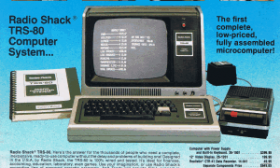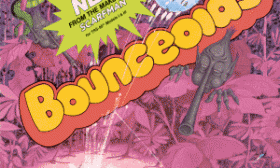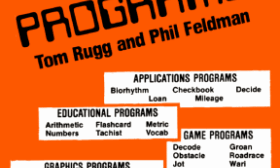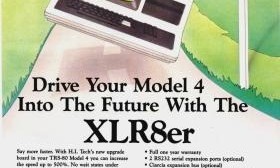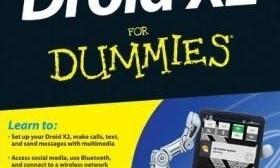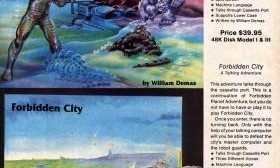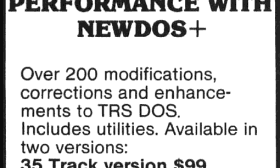Now that the Radio Shack computer project had been approved by Charles Tandy, the question was how many computers to build. Steve Leininger and Don French both felt that 50,000 units was a reasonable number. That figure was considered laughable (literally) by those in charge, who felt that 1,000 units was more reasonable. (A number that seems absurdly low when you consider that MITS sold 1,000 Altair computers in February 1975 alone.)
The 1,000 target was later increased to 3,000. At the time, Radio Shack had slightly over 3,000 stores. It was decided that if the computer failed to sell, the 3,000 units built could be used in the stores to keep inventory.
Actually, French described it as being phrased “when” the computer failed to sell. There was very little confidence in the project in the upper levels of management at Radio Shack. According to a 1981 InfoWorld article, one executive expressed his disapproval to French with this message: “Don’t waste my time – we can’t sell computers.”
(Read more...)
There were many unofficial adaptations of the Atari arcade game Asteroids written for the TRS-80. Super Nova from Big Five Software and Planetoids from Adventure International were considered among the best.
Bounceoids (not “Bounceroids” as some sources state) was an Asteroids-inspired game written by Robert Pappas (author of Frogger and Crazy Painter) and sold by the Cornsoft Group. It took the concept behind Asteroids and gave it an intriguing twist: what if asteroids didn’t wrap around the sides of the screen, but bounced off the sides instead?
Although this might sound like a minor difference, having the asteroids bounce completely changes the gameplay. The same playing strategies that work in Asteroids (some of which also work in Super Nova and Planetoids) don’t work in Bounceoids. In particular, the movement of the bouncing asteroids means that the player must move almost constantly to avoid them.
(Read more...)
In the early days of microcomputers, books containing “type-in” BASIC programs were common. But probably the book series published for the widest range of computers was the “32 BASIC Programs” series, written by Tom Rugg and Phil Feldman and published by dilithium Press. (The name dilithium was intentionally lowercase.)
Each book contained thirty-two BASIC programs divided into six categories: applications, educational, graphics, game, mathematics, and miscellaneous. Some of the later books added seven extra programs spread across the same categories.
The text of each book was almost identical, sometimes with just the name of the computer changed. Of course, the programs themselves and the screenshots illustrating each program were necessarily different for each new computer.
The TRS-80 entry in the series was titled TRS-80 Programs: 32 BASIC Programs for the TRS-80 (Level II) Computer. Judging by the publication dates, it was the second book in the series, immediately following the Commodore PET version.
(Read more...)
The XLR8er (pronounced accelerator) was a speed-up and memory expansion board for the TRS-80 Model 4, regarded by many to be the ultimate Model 4 expansion. The XLR8er replaced the Model 4 Z80 CPU with an enhanced microprocessor that offered 256K of additional memory (for a total of 384K) and up to double the speed. The XLR8er originally sold for $299.95 (with memory) when H.I. Tech, Inc. introduced it around 1986, but that price soon dropped to $249.95.
The XLR8er hardware was based on the SB-180 single-board computer project that was presented by Steve Ciarcia in the September and October issues of BYTE and sold by MicroMint. The XLR8er was close enough to the SB-180 design that it was able to accept “Ciarcia” expansion modules designed for the SB-180.
(Read more...)
One of the most famous TRS-80 companies was Alpha Products. If you called technical support at Alpha Products after 1984, you probably spoke to Kevin Tschudi. While working there from 1981 to 1991, he wrote the VS-100 Talker software and Newclock-80 drivers and co-designed the A-Bus system.
In this interview, conducted in August 2011, he talks about his experiences at Alpha Products.
(Read more...)
Dan Gookin is a popular computer book author who has written 120 titles that have sold 12 million copies and been translated into over 30 languages. He is perhaps most famous for DOS for Dummies, his 1991 book which became the fastest selling computer book and launched the For Dummies series that continues today. He also maintains the web site Wambooli
In this interview, conducted in August 2011, he talks about how he started in computers with a TRS-80 Model III.
(Read more...)
William Demas is the author of many notable TRS-80 games, including
Panik,
Frogs,
Forbidden Planet, and
Forbidden City. In this interview, conducted in July 2011, he discusses his TRS-80 games and experiences.
(Read more...)
NEWDOS 2.1, also known as NEWDOS, NEWDOS/21, and NEWDOS+, was the first alternative disk operating system for the TRS-80 Model I. Introduced in March 1979 by Apparat, Inc. of Denver, Colorado, NEWDOS jump started the entire third-party TRS-80 disk operating system market. NEWDOS was considered by many to be an essential program for the Model I; it is quite possible that NEWDOS was more widely used than Model I TRSDOS itself.
(Read more...)
I used TRSTools to apply my 2012 date extension patches because I wanted to make the update process as easy as possible for people using an emulated TRS-80 with virtual disks. But for those of us with a “real” physical TRS-80, or who just want to update their disks the old-fashioned way, here are the free patch files for my 2012 date extension update.
There are three different sets of patches for three different operating systems: Model 4 LS-DOS 6.3.1, Model III LDOS 5.3.1, and Model I LDOS 5.3.1. Each set consists of an installer JCL file and six patch files.
(Read more...)
To extend LDOS and LS-DOS file dating past 2011, I decided to use an approach that I devised back in 1993 when I was first writing PERUSE, my TRS-80 file utility. My method stores the new date in the same fields in the directory without taking up any more space or taking away any more file passwords. This approach is automatically compatible with all LDOS/LS-DOS disks and I have yet to encounter a file for which this dating scheme fails. (If you do, please let me know so that I can fix the problem.) With my patches, disks don’t even need to be converted but will just transparently store dates after 2011.
My patches also fix a problem occasionally encountered with LDOS 5.3 and LS-DOS 6.3. If an older operating system was used to copy files onto a date converted disk, then the copied files will still have the older user password field. LDOS 5.3 and LS-DOS 6.3 (which replaced the user password with date and time) will interpret that password as a garbled date and time. The patches check specifically for such files and use the older year instead (providing more accurate results than unpatched versions).
(Read more...)
